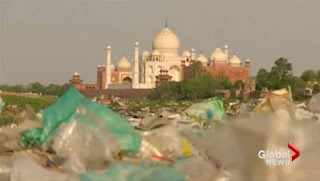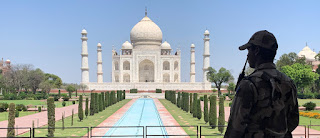effects of air pollution on taj mahal: Pollution of the Taj Mahal
The Taj Mahal is often considered the jewel of Muslim architecture in India and is one of the world's universally acclaimed creations. The Taj Mahal is considered to be the greatest architectural achievement in the entire range of Indo-Islamic structures built in the Indian subcontinent. It is recognized as an architectural beauty that is a pattern combining solids and voids. It also includes arches and domes that enhance the aesthetic aspect of the entire structure. But for many years, the Taj Mahal has been turning yellow mainly due to air pollution, stone malfunction.
How beautiful is the Taj Mahal?
There are no words to describe such a man-made wonder. The Mughal emperor Shah Jahan employed the best architects and builders, as well as employing thousands of workers, including sculptors, layers of bricks, calligraphers, and skilled workers in a gemstone. Important components such as lapis lazuli (Afghanistan), jade (China), coral (Arabia), and Manik (Sri Lanka) turquoise (Tibet) were used extensively to beautify the monument. But most of the precious stones were already looted. In addition, the milky white marble was brought from Makrana mines from Rajasthan. The 144-foot-high main dome built of white marble-covered brick masonry weighs several thousand tons. The Taj was also the most ambitious project undertaken by the Mughal emperors.
What are the causes of the pollution of the Taj Mahal?
Air pollution
Agra and its neighboring areas have high rates of pollution due to automobile discharge, municipal waste, dung, and other types of waste. These wastes released large amounts of Particulate Matter (PM) into the atmosphere, causing severe environmental damage. It should be noted that about 2000 metric tonnes of garbage was being dumped every day in Agra. Burning of this waste causes a lot of damage to the ecosystem. Dust and carbon-rich particles emitted during the burning of fossil fuels have been the primary cause of the decomposition of the Taj Mahal. According to various reports, PMs are 2 times the national standard (40) and more than 8 times the WHO guideline. Ganga and Yamuna rivers and effects of air pollution on taj mahal




Comments
Post a Comment